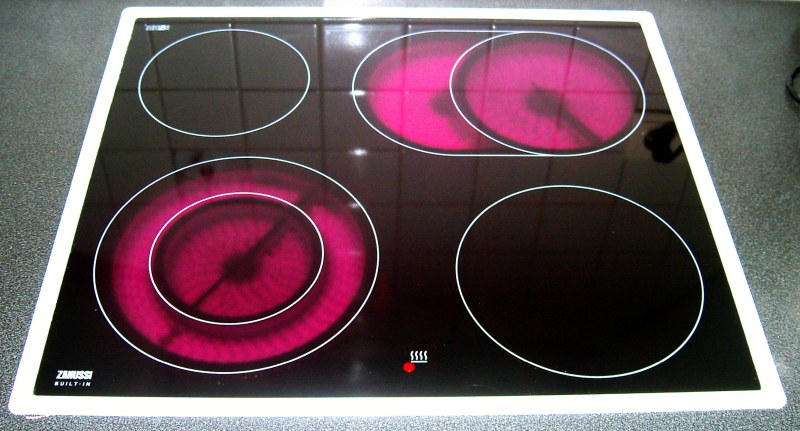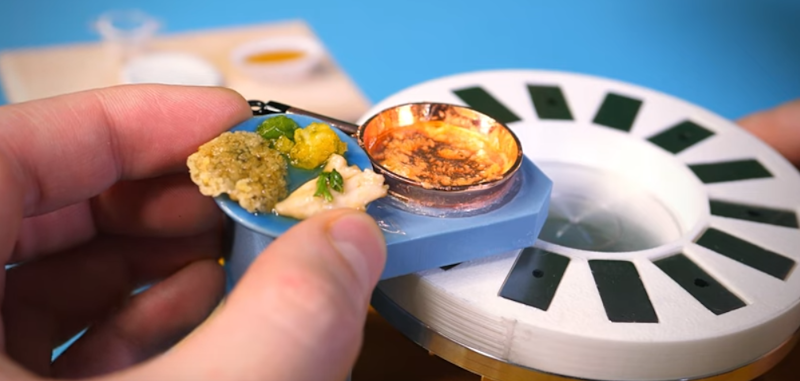Preparing food is the fourth most energy-intensive activity in a household. While there has been a lot of effort on the first three — space heating, water heating, and electrical appliances — most houses still use stoves and ovens that are not too dissimilar to those from half a century ago.
More recent technologies that make cooking more efficient and pleasant have been developed, such as induction heating. Other well-known and common appliances are secretly power savers: microwaves and electric kettles. In addition, pressure cookers enable the shortening of cooking times, and for those who like dishes that take hours to simmer, vacuum-insulated pans can be a real energy-saver.
Not Just About Energy
One aspect that is often neglected in discussions about saving energy is that many more power-efficient methods are simply more convenient and require less cleaning. Speaking as someone who has had to do things like heating milk on a gas stove, using a microwave saves one from having to scrub the pan clean afterwards. Similarly, an electric kettle beats a stovetop tea kettle any day of the week for its speed and convenience.
Not having to keep an eye on whatever will be boiling soon, and never coming upon a boiled over pan of milk is convenient, and an induction stove is very easy to clean as it’s only ever indirectly heated. Heating something up in a microwave directly on the plate is much more convenient than having to clean a dirty a frying pan afterwards.
All of which is to say that not only are many of these approaches energy-efficient, they’re also excellent for lazy people and everyone else who doesn’t want to spend more time on cooking, boiling, and cleaning each day than strictly necessary.
Running The Numbers
In an article by the BBC on why you should stop using your oven, they cite a study by Frankowska et al. (2020), in which the energy consumption of a few different heating methods are compared. Of these two the boiling of water and reheating of a casserole are good examples:
Boiling water (1 cup of tea)
- 0.05 kWh, 4 minutes in a microwave
- 0.07 kWh, 2 minutes in an electric kettle
- 0.14 kWh, 2 minutes in covered pan or kettle on induction stove
- 0.18 kWh, 5 minutes on standard electric stove
Reheating casserole
- 0.11 kWh, 8 minutes in microwave
- 0.35 kWh, 5 minutes on induction stove
- 0.43 kWh, 12 minutes on standard electric stove
- 2.27 kWh, 45 minutes in the oven
Porridge
- 0.07 kWh, 5 minutes in microwave
- 0.35 kWh, 5 minutes on induction stove
- 0.36 kWh, 10 minutes on standard electric stove
Of note here is of course that when an electric kettle is mentioned, it refers to a European-style electric kettle. These tend to be rated for 2 kW – 3 kW, which enables them to boil water very quickly. So it’s no surprise that they’re boiling water twice as fast as a microwave with a 1,000 W setting. Depending on the use case, more energy input can make things boil and cook significantly faster, while saving energy and one’s time as well in the process. Which leads us to the other options, such as optimized heat transfers and lids.
Putting A Lid On It
A general idea behind efficient cooking is to get as much of the energy into the item that is being heated, without having it be converted to waste heat and escape into the environment. This is an obvious issue with gas stoves: a significant part of the heat produced by the combustion flows out the side and never heats up the cookware.
With an electric stove where the pan is placed directly on the surface that is being heated by the heating element, there is significantly less heat escaping into the environment, though here we still have the inefficiencies of heating the stove surface, transferring that heat into the pan’s material and from there into the contents of the pan.
This is where the idea behind induction stoves is so very attractive and simple: rather than putting the cookware on something hot, with induction an induction coil induces inductive coupling in the ferromagnetic material of the cookware, which causes it to heat up. This way the cookware itself becomes the hot surface that heats the food, which skips all of the previously mentioned intermediate steps, and thus losses.
This then leaves the other loss of heat: from the pan contents itself, which is where lids come in. By turning the pan into a closed vessel, the only effective way for heat to escape from the pan is through heating up the pan and lid and radiating into the environment that way. As a simple comparison can show here, the use of a pan lid can significantly shorten the amount of time needed to boil water, and the power needed to keep the contents on temperature.
From this we can thus deduce that an even more efficient way to cook on a stove would be if we could prevent the heat from radiating through the pan’s material. This is where double-walled cookware comes into play, with some level of vacuum between both walls much like in a thermos, which are great at keeping drinks hot or cold for long periods. In these pans, food stays warm for hours even without externally applied heat.
Putting On Pressure
The only major disadvantage of double-walled cookware (like Kuhn Rikon) is that they are very pricey, with a simple pan often costing upwards of a few hundred dollars. Outside of finding a used one for cheap, this is probably the kind of expense that’d be hard to justify. So on the other end of the budget scale, consider pressure cookers, which are somewhat like the extreme version of pan lids.
The basic idea behind a pressure cooker is that the high pressure inhibits boiling, so the cooking temperature can be increased above 100 °C. This significantly shortens the time it takes to cook the food, although it obviously is limited to damp cooking because of the steam that enables the increased pressure levels.
Unlike vacuum-insulated cookware, pressure cookers can be found for relatively cheap, and provide energy and time savings. Perhaps the biggest disadvantages are not being able to look inside the pan while cooking – requiring cooking times to be determined beforehand – and them being unsuitable for cooking noodles, pasta and similar foods which would expand too much.
Keeping It Fun
As noted earlier, the best part of saving energy is when it also makes life easier at the same time. The good news is thus that using the microwave to (re)heat food is both easy and efficient, and an easy to clean induction stove more efficient than a gas or electric stove. This was fortunately also my finding when switching from a ceramic stove to an induction one. While the former required some scrubbing and scraping after ‘accidents’, the latter just takes a simple wipe-down with a moist kitchen towel.
I’m also fortunate enough to living in a country where I’m able to plug my 3 kW electric kettle into a kitchen outlet and efficiently boil water that way, and was able to get a 3.5 kW induction stove that I could plug into an outlet next to the kettle’s. With it being obviously so much more efficient to use electricity to cook and heat food, perhaps having a kitchen fully wired for 240 VAC is the winning move for fun, efficient cooking?
With how much of a personal topic cooking is, please feel free to sound off in the comments about your own experiences and approaches when it comes to making cooking more fun and efficient.










